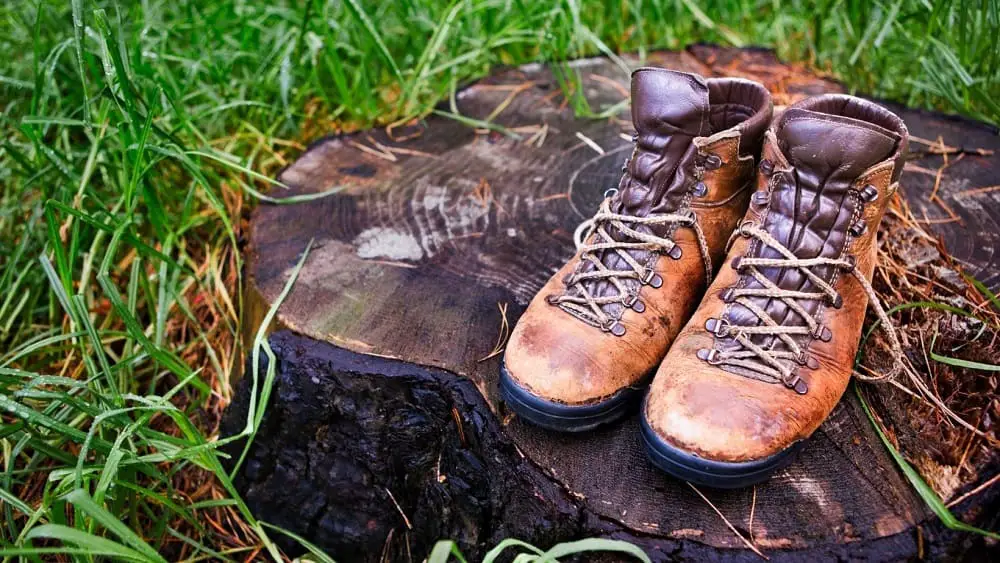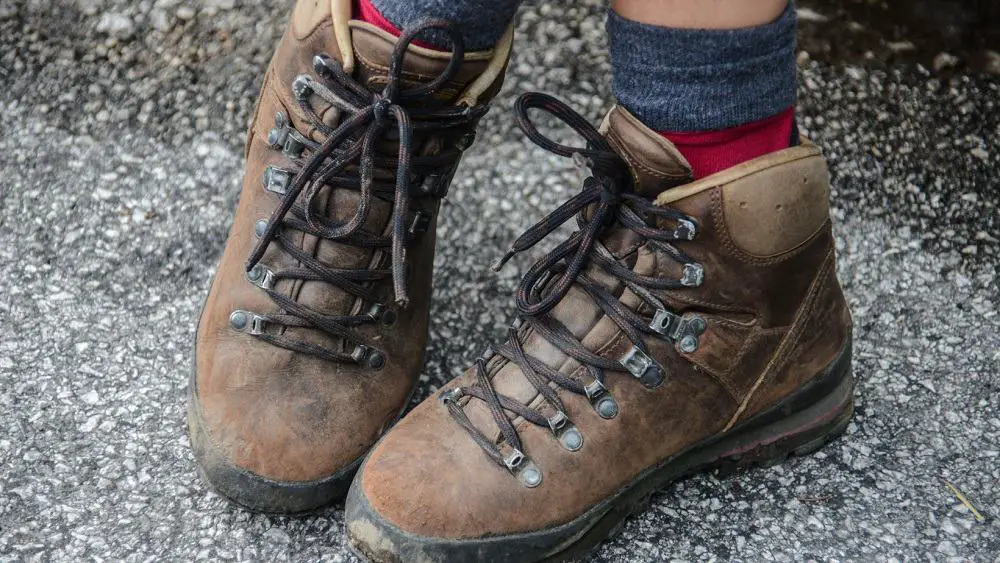There’s nothing quite like the discomfort of a soggy boot to put you right off your outdoor quest and have you yearning to be back in the comfort of the indoors, even for the most rugged of adventurers.
You may think that just buying a good brand or an expensive pair of boots will guarantee you waterproofed boots, as it seems pretty essential to those outdoor walks right? But this is not always the case.
A lot of manufacturers suggest ‘waterproofing’ your new boots before heading out with them. Either by using a protective sealant to keep out moisture or by applying waxy sprays.
We’ll take you through why some manufacturers suggest this, a few great things to look out for when buying a hiking boot, and some handy things you can do at home to preserve the life of your boots. Read on to find out more!
Do I Need To Waterproof Hiking Boots?
This depends on your activities. The payoff of not having waterproof boots is quite massive- you might think that keeping your feet dry from outdoor moisture is the only thing that matters but what about your sweat?
In essence, if a boot is 100 percent waterproof, it’s not going to be breathable- cue sweaty feet and wet socks from another source… Ever put on a pair of fully waterproofed wellington boots and thought ‘wow my feet feel like they can breathe’? This can lead to blisters, rubbing, and unnecessary discomfort.
Ultimately, as a consumer you have to decide- would you prefer the unimpeded breathability of a non-waterproofed shoe or do you value the protection against the elements above all else, even with the drawbacks?
The best solution is having a boot that is waterproof enough that liquid can bead on the surface without automatically getting absorbed into the fabric of the shoes, but with enough breathability that your feet aren’t stifled.
Find out 🥾 Are Timberlands Good for Hiking?
Waterproofing hiking boots
Many hiking boots that market themselves as waterproof usually have an inbuilt ‘waterproof membrane’ in their shoes. This specially designed material is called polytetrafluoroethylene (luckily it’s commonly shortened to PTFE). It is usually sewing in between a lining and a knit backer and bonded together to create a material ‘sock’ that is then inserted into the upper of the boot.
There are several different proprietary materials that different companies have produced, the most well-known one is probably Gore-Tex.
For extra durability and protection, the uppers, which tend to be made out of a wide variety of materials, all usually get a good coating of a water-resistant spray that lets water bead off the surface rather than absorb into the material, collecting in your boot.
However, with time, this resistant spray can wear off after multiple adventures out and about. Replacing this outer protection is usually what people are talking about when they mention waterproofing hiking boots.
How to Waterproof Gore-tex Boots?
Starting with good-quality well-made boots is a good place to begin. At least then you know any moisture isn’t coming in from cracks or holes in your shoes.
Gore-tex boots often need their outer layer of repellent replaced every once in a while- both to keep your feet feeling protected but it’s also recommended to prolong the life of your boots.
This simply requires you to purchase a good quality Durable Waterproof Repellent coating (or DWR) and spray evenly over your clean gore-tex shoes every few months or more often if you use them daily.
How Do I Waterproof Leather Hiking Boots?

Leather is a hardy shoe material that is often used in outdoor boots. Whilst leather is an incredibly durable and well-loved hiking boot material, it’s essential to give your leathers some love if you want them to stand the test of time.
Because there is a lot of natural oils in the leather (it is animal skin after all), when leather gets soaked through with water, the natural oils bond with the water molecules. As the water dries out, it takes these oils with it, leaving your leathers dry and brittle- subject to cracking and tearing.
It is recommended to seal your leathers to save them from drying and cracking. Many wearers will treat their leather boots with a special treatment to give their boots a waxy coating (usually mink oil, beeswax, or another grease-based thick water repeller).
Simply clean your boots thoroughly, dry them and apply a thin, even layer of product over your boots. Some recommend additional layers once dried. Not only will this add protection to your boot, but it’ll also leave them looking soft, shiny, and sparkly.
Waterproof, Water Resistant and Water Repellent
You might think these terms are interchangeable but in fact, they do mean slightly different things. It is important to have a grasp of these terms so you know what to look for in a hiking boot and what’s being sold to you.
It’s a pretty safe bet going for anything with Gore-tex or another well-known technology layer to give you a good level of waterproofing, though of course there are limits.
Anything labeling themselves as water-resistant are usually a step below waterproof—they can resist a bit of rain, but probably will let through any heavier than that. Anything labeled as water repellent indicates it’s probably just got a DWR sprayed on the uppers and this will certainly wear off over time.
Are Waterproof Hiking Boots Worth it?
Again, it depends on what you’re using it for. There’s no reason to carry extra bulky or expensive waterproof boots around if you’re out hiking in desert terrain or where there is little moisture- in fact having bulky boots could just be a hindrance.
Your best bet is a light breathable shoe that’s going to help evaporate sweat and give you more comfort. However, if you know you’re going to be going through shallow streams, cold, damp terrain, or through heavy rain, you’ll want to keep your feet dry for as long as you can and a hardy waterproofed leather is going to be a great choice for endurance and comfort.






[…] is their ability to work well in the rain and walking through water in emergencies. Not every hiking boot will be perfectly waterproof. Still, the Columbia Redmond V2 is designed to avoid water damage, as well as letting you […]